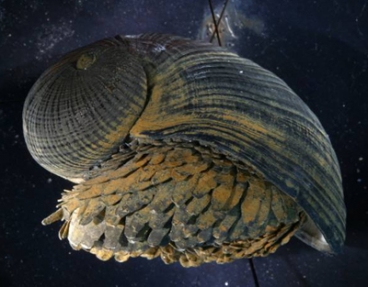New insights into a tiny snail that lives on the ocean floor could help scientists develop more effective armor for soldiers and vehicles, according to scientists from the MIT Research Institute

New insights into a tiny snail that lives on the ocean floor could help scientists develop more effective armor for soldiers and vehicles, according to scientists from the MIT Research Institute.
A research team of materials scientists, led by Professor Christine Ortiz from MIT University reports that the outer shell of the type of snail known as "scaly-foot" is different from any other armor, both natural and artificial. The research leads to the conclusion that its unique three-layered structure dissipates energy in such an amount that would break down weaker envelopes. Mimicking several aspects of the special structure could help scientists develop more effective armor for military use, explains the lead researcher. The findings of the study, which was partially funded by the US Army and the US Department of Defense, were published in the scientific journal Proceedings of the National Academy of Sciences.
The researcher's attention was drawn to this snail in 2003, when word of its discovery was made public for the first time. The snail lives in a relatively harsh environment at the bottom of the Indian Ocean, near hydrothermal vents that emit hot water. Because of this, it is frequently exposed to changes in temperature as well as high acidity, and in addition it has to defend itself against certain predators such as crabs and other types of snails.
When a crab attacks a snail, it grasps the shell of the snail with its pincers and squeezes it until it breaks - sometimes the process even lasts several days. Clamps apply mechanical energy which eventually causes the casing to break, unless it is sufficiently resistant to this energy.
In their new article, the researchers report that the shell of this particular snail has several properties that help disperse the mechanical energy exerted on it by the creatures attacking it. The most important characteristic is its three-layer shell structure, consisting of an outer layer embedded in iron sulfide grains, a thin organic layer in the middle, and an inner calcium layer. Most other snails contain a shell consisting of an inner calcium layer and only a thin organic coating layer above it. The simulations show that for this unique snail, the central thin organic layer can absorb much more energy during an attack by a predator. Moreover, it also aids in heat dissipation and temperature variation common near hydrothermal vents.
The team of scientists measured the mechanical properties of the snail shell using a device known as an indenter (diamond anvil) containing a diamond tip. By measuring the force applied to the shell, and the shell's response to this force, the researchers are able to characterize its mechanical properties.
In the next step, the researchers also examined a variety of natural exoskeletons (shells) to find the principles of protection in them, such as chitons (a marine mollusk with a shell consisting of eight overlapping coatings and one muscular leg for mobility), urchins, beetles and armored fish .

4 תגובות
For those interested, the article:
http://www.pnas.org/content/early/2010/01/07/0912988107.full.pdf+html
How is a prototype? Just did the research!
There is already a prototype, what is its durability, percentages relative to existing armor?
A snail helps the US Army!
What will happen when they find a turtle?!
One of the most interesting articles I have read recently.